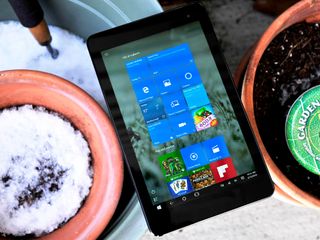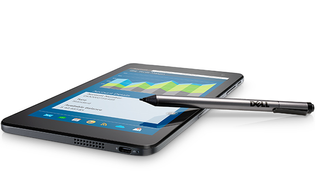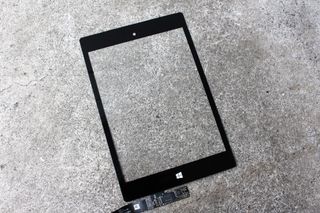What happened to all the small, premium Windows 10 tablets?
After spending a few weeks looking for a new, premium eight-inch Windows 10 tablet, we realized there simply aren't any. So where did they all go?


During the last few weeks, I've been in the market for a premium eight-inch Windows 10 tablet with pen support that's good for notetaking, entertainment consumption, web browsing and email. To my dismay, it appears nobody is making these tablets. Not two years ago, the market was full of new, small Windows tablets running Windows 8.1 and Windows 10. In 2017, I can't find a single one that's on sale "new" from OEMs.
No more high-end eight-inch Windows tablets
If I search for "8-inch Windows 10 tablet" on Amazon, I see a list of eight-inch Windows 10 tablets from lesser-known manufacturers, who are building cheap, low-powered tablets. I don't see Dell. I don't see HP, and I don't see any of the "big name" manufacturers. Instead, I see low-quality options from Linx, Teclast, NuVision, and CHUWI, with the only big name on that list being Acer with the Iconia W8.
All of these tablets are on sale for less than $120, meaning the specs and build aren't going to be great. I'm not saying that's a bad thing. It's great that you can get a Windows 10 tablet for so cheap these days, but that's not what I'm looking for. I'm looking for an iPad Mini equivalent Windows 10 tablet. Something that feels premium to hold, with an incredible screen, pen support and super fast performance.
Dell and HP both used to sell premium Windows 8.1 tablets, some of which included pen support. The HP Envy 8 Note was a perfect example of this. It was a premium, thin and light mini Windows 10 tablet that also had an Active Stylus, which was perfect for notetaking, web browsing, and email. It had a 1080p display, which is ideal for an eight-inch device, and is exactly what I'm looking today. Unfortunately, HP doesn't sell it anymore.
Dell had the Venue 8 Pro, which was also thin and light, rocking a 1080p screen, 4GB RAM, microSD expansion support and USB-C. Again, another great premium offering, but Dell doesn't sell this anymore either. In fact, both Dell and HP aren't selling any small Windows 10 tablets right now. They completely pulled out of this market, leaving lesser-known hardware makers to fill the gap with cheap Windows tablets.
So, why isn't there an iPad Mini equivalent Windows 10 tablet?
No money in the market
Dell and HP likely pulled out of the market because they were seeing poor sales, which means there isn't much of a market for this kind of device. That's unfortunate because I have several reasons to want a mini, premium Windows 10 tablet with pen support. And right now, that tablet doesn't exist. Nobody is building it. NuVision, easily one of the best eight-inch Windows 10 tablet manufacturers right now, is focused on making low-cost tablets rather than high-end premium ones.
Get the Windows Central Newsletter
All the latest news, reviews, and guides for Windows and Xbox diehards.
For the last few years, iPad sales declined massively. Perhaps the obsession with tablets is over.
Microsoft itself was going to release a premium mini Windows 8.1 tablet back in 2014, called the Surface Mini. This device was just a couple weeks from being announced before the internal decision was made to pull the product. The Surface Mini was going to be a Windows RT-based mini Surface with pen support. This would have been the iPad Mini Windows tablet I'm currently looking for.

Hopefully, Microsoft returns to its Surface Mini project one day. With Windows 10 coming to ARM processors in the fall, later this year would be a perfect time for Microsoft to announce a small Surface tablet, powered by ARM, with pen support. For now, however, I've settled on an eight-inch tablet from NuVision. Sure, it doesn't have pen support, but it appears to be well built and has a 1080p display.
Software to blame?
Perhaps part of the blame can be put on Microsoft for turning Windows 10 into a terrible tablet OS. Compared to Windows 8.1, Windows 10 was a major step back in tablet-mode functionality. In 2017, things are a bit better, but they still aren't where they used to be.
Small things such as pleasant animations and unique tablet experiences aren't present in Windows 10. On Windows 8.1, you could flick through your open apps by swiping from the left, an incredibly quick and useful way of multitasking. In Windows 10, that feature isn't present. Instead, swiping from the right just opens Task View.
Also, the Start Screen doesn't really scale well at eight inches. When in portrait mode, the Start Screen has this odd, useless space on either side of the columns where the Live tiles sit. Microsoft needs to optimize tablet mode for eight-inch devices a bit more.
So perhaps one of the reasons nobody is buying eight-inch Windows 10 tablets is because the software experience isn't up to snuff? I mean, as an "average Joe," why wouldn't you buy an iPad Mini over a Windows 10 offering of the same price?
Your thoughts?
I'm curious to see how many others out there are also in the market for an eight-inch tablet. I understand devices like the Surface Pro have removed all needs for having a smaller tablet, but I find there are several different use cases for smaller eight-inch devices instead of a 10- or 12-inch one.
What do you think?

